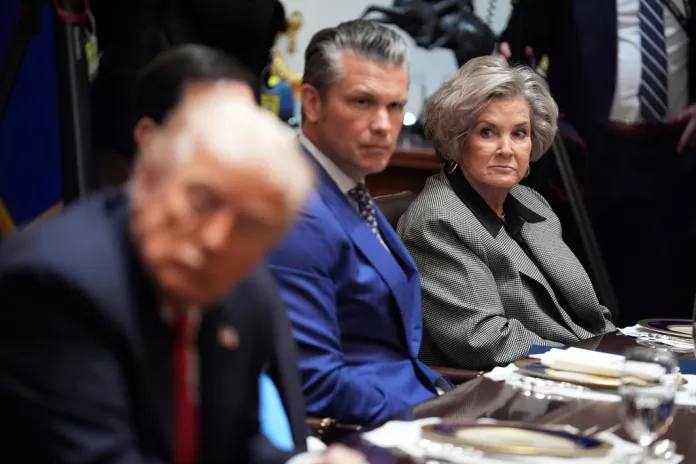Trump Takes on the Federal Reserve: Here’s His Master Plan
The article discusses President Donald Trump’s efforts to make the Federal Reserve (Fed) more accountable to the American public, challenging its conventional independence. Trump’s campaign includes questioning the accuracy of economic data used by the Fed, criticizing the central bank for being disconnected from everyday Americans, and appointing officials aligned with his economic policies to ensure better coordination between fiscal and monetary policy. By demanding resignations and publicly pressuring Fed leaders, Trump aims to shift the Fed from an insulated institution to one that responds to Main Street concerns. Historically, tensions between presidents and the Fed have been common, but trump is pursuing a more systematic approach to integrate economic policy and increase transparency and accountability at the central bank.
When President Donald Trump publicly demanded Federal Reserve Governor Lisa Cook “resign immediately” over questions about a mortgage application, it wasn’t just about one official.
It was the latest step in a broader campaign to break the central bank’s culture of insulation from voters and to make the Fed answerable to Main Street.
For decades, tension between presidents and unelected Fed officials has defined economic power in the United States.
While presidents answer to voters every four years, Fed governors serve 14-year terms and make decisions that shape home ownership, job prospects, and growth, without facing the electorate.
Trump’s Master Plan
Trump’s broader plan to make the Fed accountable to Main Street appears to have three key components:
- Demonstrate that the Fed is operating using faulty data;
- Show that the Fed is out of touch with Americans; and
- Install the best and brightest at the Fed who are willing to coordinate economic policy between the President and the central bank.
In confronting the reliability of economic data, Trump fired Bureau of Labor Statistics Commissioner Erika McEntarfer — citing repeated releases of inaccurate employment data.
In doing so, Trump signals that he will not tolerate fake news data dependence as a cover for Fed interest rate policy.
In showing the Fed is out of touch, Trump is applying relentless public pressure on the Federal Reserve — calling out Fed Chair Jerome Powell for “artificially” high rates and billions of dollars of spending on building renovations.
The President is highlighting examples where the central bank lives isolated from Main Street.
Finally, Trump’s appointment of economist Stephen Miran to the Fed Board reflects his desire to align White House fiscal policy with Federal Reserve monetary policy.
Stephen Miran isn’t an elite academic; he is a Wall Street veteran, chair of Trump’s Council of Economic Advisors, and a regular guy (who happens to have a Ph.D. from Harvard).
He brings real-world experience, fiscal understanding, and White House connection to the board. Miran represents a bridge between monetary and fiscal policy.
The Federal Reserve’s job is to steer the U.S. economy by raising rates to cool inflation and lowering them to spur growth.
Their actions affect mortgage costs, car loans, and business expansion. Presidential control, by contrast, lies in fiscal policy—spending and tax decisions.
When these two are at odds, the economy and ordinary Americans may suffer: the Fed can slow growth just as the White House tries to speed it up.
At the same time higher rates cost the government billions in payments on new treasury debt.
Fed officials insist their “independence” is a shield against political meddling. They see themselves as technical experts, resisting short-term political priorities for America’s long-term health.
Treasury Secretary Scott Bessent has stated that the Fed has foundational problems that result in the Central Bank divorcing banking policy from the needs of local communities.
Clashes between presidents and central banks are nothing new.
Andrew Jackson fought the “monster bank” in the 1830s. Richard Nixon leaned on Fed Chair Arthur Burns ahead of the 1972 election.
When Fed and White House policies align — as during the 2008 crisis under George W. Bush and Barack Obama — America was able to manage a financial crisis that brought our economy to the edge of disaster.
Biden, in contrast, barely communicated with the Fed. Trump’s implementing a concerted reboot for how our economy operates by integrating the fiscal and monetary policy responsibility to Main Street.
For two centuries, presidents have battled the central bank. Trump is the first to pursue a systematic plan.
The Governor Cook controversy shows the President isn’t kidding around about forcing America’s most powerful unelected board to answer to the people.
Trump’s plan is a systematic effort to ensure central bank policies reflect economic realities—and the choices—of Main Street. Trump’s philosophy presses for coordination, data transparency, and accountability.
Trump is taking steps to ensure that America’s most powerful unelected board answers to voters whose livelihoods hang in the balance.
Alan Rechtschaffen is senior lecturer in capital markets law at New York University, author of Capital Markets, Derivatives, and the Law (Oxford University Press), board member of the Wilson Center for Scholars.
The views and opinions expressed in this commentary are those of the author and do not reflect the official position of the Daily Caller News Foundation.
All content created by the Daily Caller News Foundation, an independent and nonpartisan newswire service, is available without charge to any legitimate news publisher that can provide a large audience. All republished articles must include our logo, our reporter’s byline and their DCNF affiliation. For any questions about our guidelines or partnering with us, please contact [email protected].
The views expressed in this opinion article are those of their author and are not necessarily either d or endorsed by the owners of this website. If you are interested in contributing an Op-Ed to The Western Journal, you can learn about our submission guidelines and process here.
Advertise with The Western Journal and reach millions of highly engaged readers, while supporting our work. Advertise Today.
" Conservative News Daily does not always share or support the views and opinions expressed here; they are just those of the writer."




